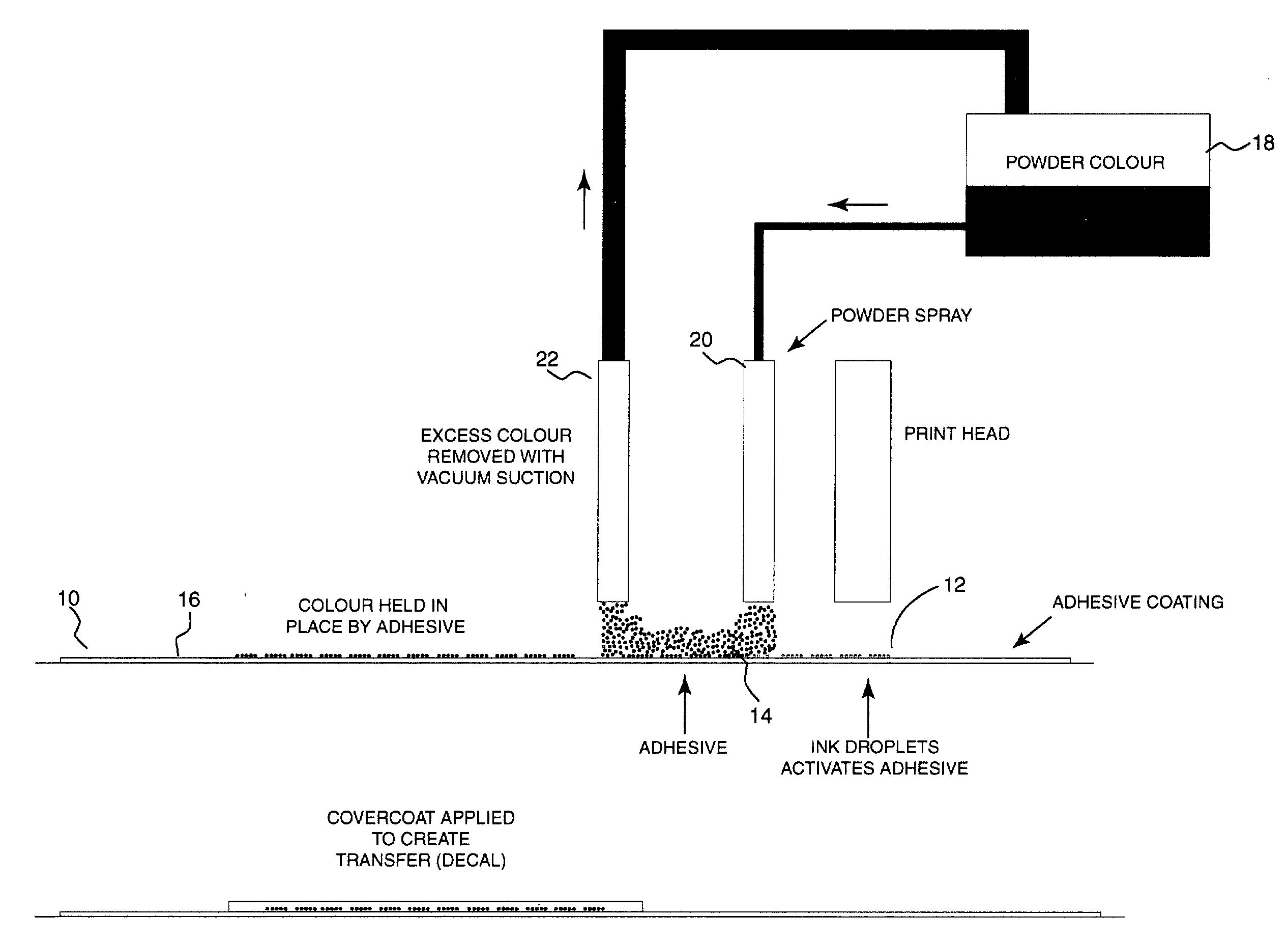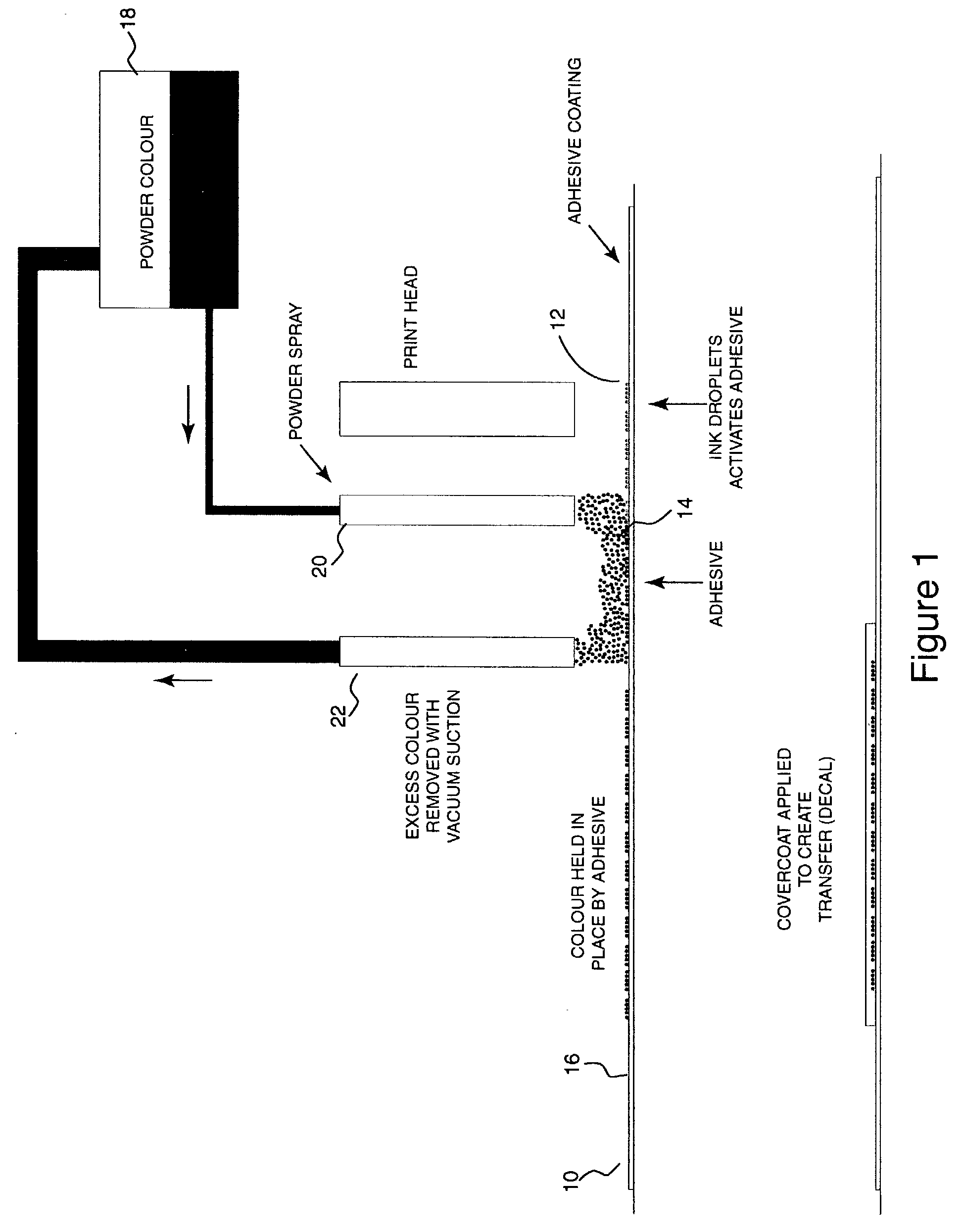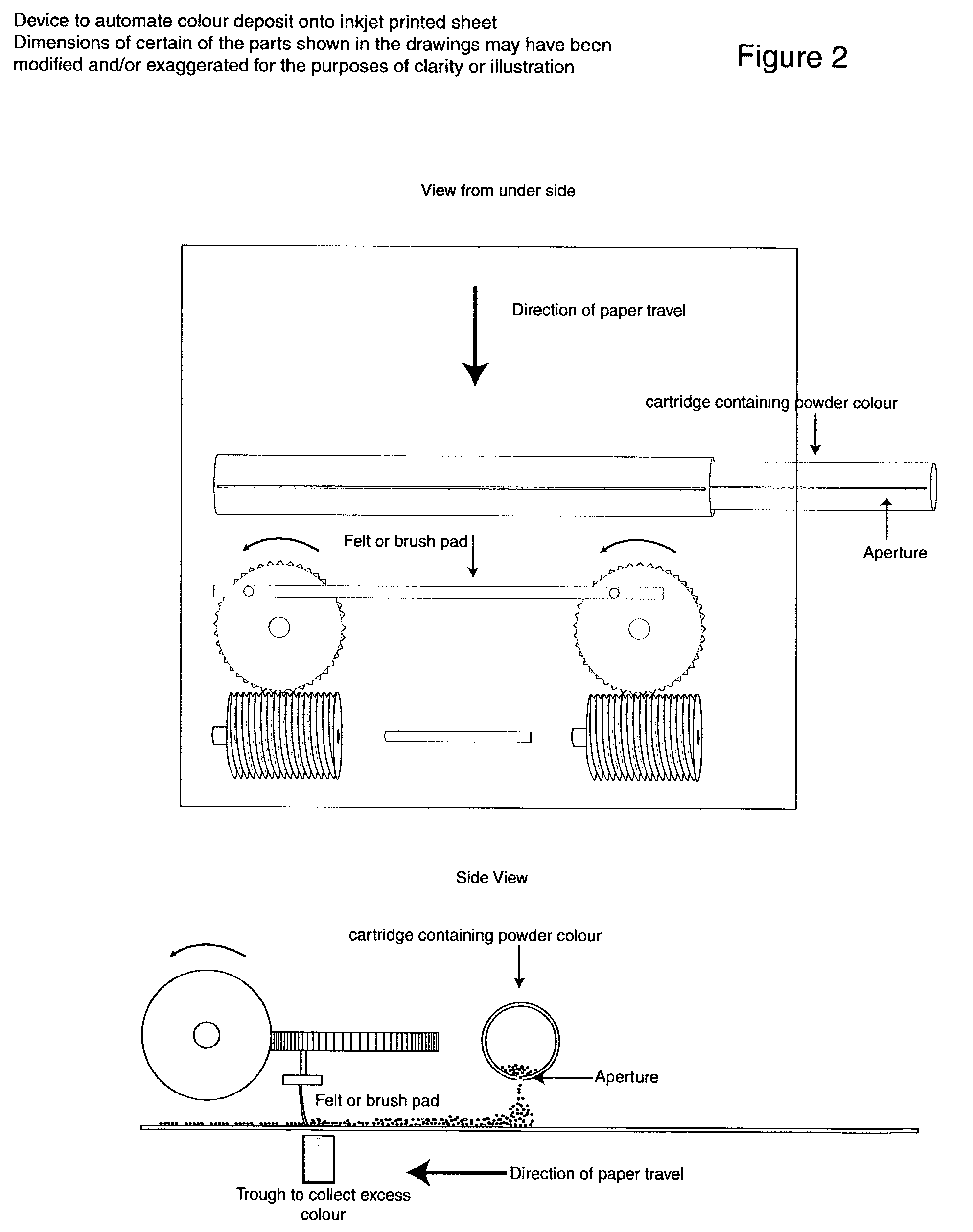Ceramic powder transfer process
a technology of ceramic powder and transfer process, which is applied in the direction of printing process, duplicating/marking method, decorative arts, etc., can solve the problems of high cost of screen development, economic only viable, prohibitive screen development for one-off printing jobs,
- Summary
- Abstract
- Description
- Claims
- Application Information
AI Technical Summary
Benefits of technology
Problems solved by technology
Method used
Image
Examples
Embodiment Construction
[0060] An image in the form of a photograph is digitised in the usual way using a digital colour scanner and stored in the memory of a personal computer.
[0061] At this stage the digitised image can be altered if necessary by colour grading and / or rastering using a software package such as Adobe Photoshop.TM. for example.
[0062] The digitized image is then printed onto a sheet of water-slide paper and the appropriate coloured thermographic powder is poured over the adherent image area. Excess thermographic powder is removed by suction or by vibrating the paper. The print is then coated with a covercoat solution which holds the powder particles in place. The print is then soaked in water to remove the adhesive coating and release the flexible transfer or decal which can be slid off the paper base and applied to a surface. The ceramic article is then fired in a kiln in a conventional manner.
[0063] Various features of the invention have been particularly shown and described in connection...
PUM
| Property | Measurement | Unit |
|---|---|---|
| Color | aaaaa | aaaaa |
| Area | aaaaa | aaaaa |
| Water solubility | aaaaa | aaaaa |
Abstract
Description
Claims
Application Information
 Login to View More
Login to View More - R&D
- Intellectual Property
- Life Sciences
- Materials
- Tech Scout
- Unparalleled Data Quality
- Higher Quality Content
- 60% Fewer Hallucinations
Browse by: Latest US Patents, China's latest patents, Technical Efficacy Thesaurus, Application Domain, Technology Topic, Popular Technical Reports.
© 2025 PatSnap. All rights reserved.Legal|Privacy policy|Modern Slavery Act Transparency Statement|Sitemap|About US| Contact US: help@patsnap.com



